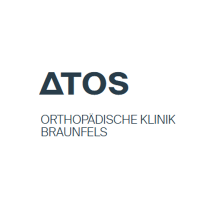A major advantage of minimally invasive hip endoprosthetics is a much smaller incision. This protects the soft tissues and muscle attachments in the thigh and hip area. As a result, postoperative rehabilitation improves and patients become mobile again more quickly.
In contrast to what is widely reported in the non-professional media, a very high body mass index, i.e. heavy overweight, is per se not an obstacle to hip endoprosthetics. Specialists in hip endoprosthetics only need a few special instruments in order to routinely perform the operation with very good results.
The small incision - which is why the entire procedure is also referred to as minimally invasive hip endoprosthetics - also has the advantage that scarring is much less prominent. Due to smaller incisions in the skin and the protection of the soft tissue under the skin, patients are usually pain-free again much more quickly.
This also shortens the time required for follow-up treatment, because patients are back on their feet more quickly and can subsequently begin outpatient or inpatient rehabilitation more easily. The average lifespan of hip endoprostheses is estimated at 15 to 20 years on average. A change of endoprosthesis beyond this period is definitely advisable, especially if pain or changes in the mobility make everyday life more difficult again.
For people who have a very high percentage of muscles, the minimally invasive procedure can become more difficult or even impossible. In this case, a conventional hip arthroplasty is necessary. On the other hand, it is not yet possible to make a conclusive judgement about the effectiveness of minimally invasive hip endoprosthetics. The study situation is still not sufficient for this. The success of the surgery is, to a large extent, related to the experience of the hip endoprosthetics specialist. The less experience the specialist has, the higher the risk of complications during and especially after the surgery. The most common disadvantages or complications of the surgery include wound healing disorders and inflammations, soft tissue injuries and the like.
Specialists in hip endoprosthetics are orthopedic surgeons and specialists in trauma, hand and reconstructive surgery. The learning curve for the minimally invasive implantation of endoprostheses is relatively long and sometimes very complicated for physicians.
It is by no means true that specialists in hip endoprosthetics have mastered the minimally invasive method after about 20 to 30 surgeries. Experts among the surgeons have also taken courses at corresponding training clinics or anatomical institutes. In addition, due to the reduced access to the joint, the procedure places increased demands on the three-dimensional thinking of the hip endoprosthetics specialist. This, too, requires extensive prior training.
Specialized clinics in the field of minimally invasive procedures for hip replacement usually also offer preoperative patient training. After the treatment, the patients are released into the care of an experienced team of physiotherapists. Thereby patients become mobile again more quickly and suffer significantly less pain.
- Dtsch Arztebl 2006; 103(49):A 3333–3339



































